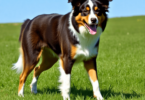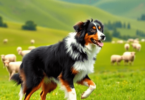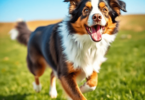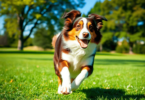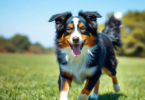The History of Akbash Dogs: From Turkish Guardian to Family Companion
The Akbash Dog is a remarkable symbol of Turkey’s rich agricultural heritage. This traditional breed, often referred to as a Turkish guardian dog, has an impressive history that is closely connected to the lives of rural communities.
Historical Significance
The Akbash has been used for centuries as a livestock guardian, protecting sheep and other animals from powerful predators like wolves and bears. Its origins can be traced back thousands of years in the Fertile Crescent, where domesticated dogs first appeared alongside human agriculture.
Role in Agriculture
As a guardian of livestock, the Akbash plays a crucial role in ensuring the safety and productivity of farming operations. Its instinctual protective nature allows it to work independently in herding environments, making it an invaluable asset to shepherds.
Understanding the history of the Akbash breed is important not only in Turkey but also worldwide. This breed represents a legacy that showcases the harmonious relationship between humans and their canine companions throughout history. By acknowledging its contributions, we can appreciate the lasting bond that continues to thrive today.

1. Historical Background of the Akbash Dog
The Akbash Dog has a rich history that can be traced back to the Fertile Crescent, an area known as one of the earliest cradles of civilization. This region, encompassing parts of modern-day Turkey, Syria, Iraq, and Iran, is where humanity first embraced agriculture.
1. Origins
The Akbash breed’s roots lie in ancient Turkish dog breeds that were developed for specific purposes. Evidence suggests that domesticated dogs have been present in this area for around 10,000 years. These dogs were integral to early agricultural societies, assisting with herding and protecting livestock from predators.
2. Connection to Agriculture
In a time when communities relied heavily on their livestock for sustenance, having dependable guardians was vital. The Akbash’s role as a livestock guardian evolved alongside agriculture in Turkey and its neighboring regions. Their ability to work independently made them invaluable to shepherds managing flocks of sheep and goats.
3. Role in Early Societies
Domesticated dogs played a critical part in early human societies. They were not merely companions but essential working partners that contributed to survival. The Akbash, with its protective instincts and calm demeanor, exemplified the characteristics desired in a working dog during these formative years.
From their origins in the Fertile Crescent to their integration into ancient agricultural practices, Akbash Dogs have shaped Turkish history significantly. Their legacy continues today, echoing through rural communities that still rely on these magnificent guardians for protection and companionship. Understanding this historical backdrop enriches our appreciation for the breed and its enduring significance in both Turkey and beyond.
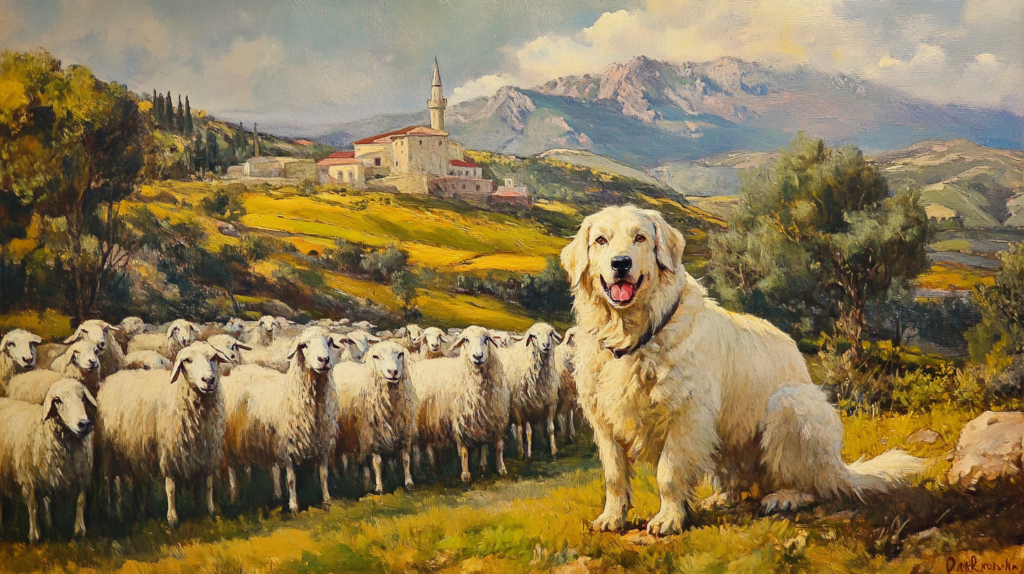
2. Development of the Akbash Breed
The Akbash breed has undergone a fascinating evolution, specifically tailored for its role as a livestock guardian. This breed’s development is steeped in a rich history of agricultural practices, leading to the refinement of both physical and behavioral traits essential for protecting flocks.
Key Traits of the Akbash Dog:
- Physical Characteristics: The Akbash features a robust build, with males typically weighing between 77-143 lbs and females ranging from 50-165 lbs. Their imposing stature is complemented by a striking white coat, which not only serves aesthetic purposes but also provides camouflage in snowy environments.
- Behavioral Qualities: Renowned for their calm demeanor, Akbash Dogs exhibit strong protective instincts. They are independent thinkers, capable of making quick decisions to defend their territory without constant supervision.
When comparing the Akbash with other traditional livestock guardian breeds, such as the Anatolian Shepherd and the Kangal Dog, several similarities and distinctions emerge:
- Anatolian Shepherd: Also bred for guarding livestock, this breed is slightly heavier and known for its fierce loyalty. However, while both share protective traits, the Akbash often exhibits a more reserved temperament compared to the Anatolian’s assertiveness.
- Kangal Dog: Recognized for its impressive bite force, the Kangal is another guardian breed native to Turkey. Unlike the Kangal, which often requires more intensive training due to its high energy levels, the Akbash’s calmer disposition may make it easier for some families to manage.
The recognition of the Akbash by organizations like the United Kennel Club (UKC) in 1998 and its inclusion in various working dog registries highlights its growing importance within the canine community. The American Dog Breeders Association (ADAA) also plays a vital role in promoting standards that help preserve the breed’s unique qualities.
This acknowledgment ensures that future generations will appreciate not just the beauty of the Akbash but also its legacy as a steadfast protector on farms across Turkey and beyond.
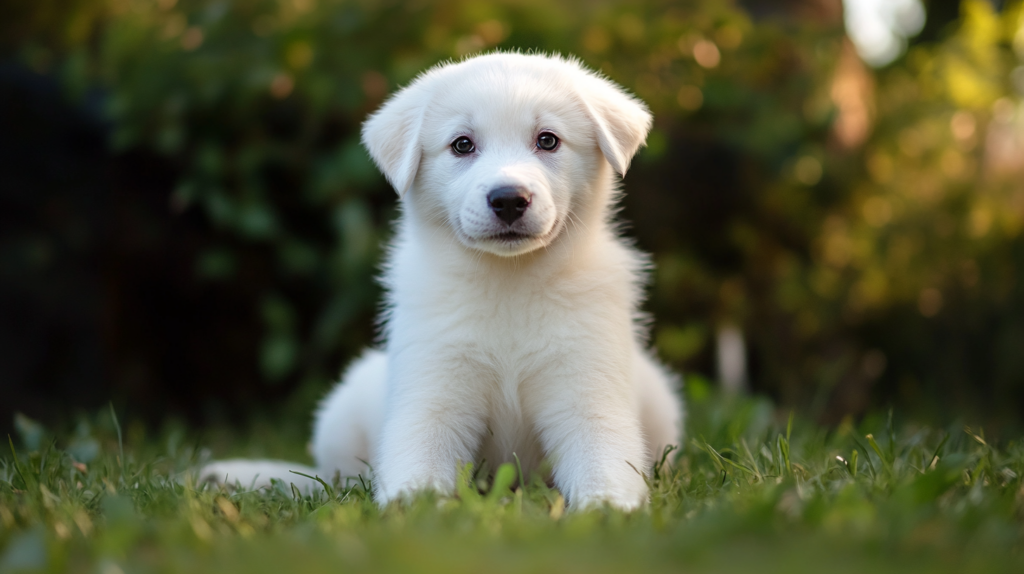
4. The Role of the Akbash as a Livestock Guardian
The Akbash Dog has a well-deserved reputation as a livestock guardian. Throughout history, it has been used to protect flocks from dangerous predators such as wolves and bears. With its sharp instincts, this breed is naturally skilled at spotting and dealing with threats, making it an invaluable companion on farms and ranches.
Key Characteristics of Akbash Dogs as Livestock Guardians
Here are some important traits that make Akbash Dogs effective in their role as guardians:
- Independence: Akbash Dogs are known for their ability to work on their own. They assess situations and take action without needing constant guidance from humans.
- Protective Instincts: Their natural instinct to protect makes them watchful defenders of livestock, often forming strong bonds with the animals they guard.
- Physical Presence: The powerful build and imposing stature of the Akbash serve as a deterrent to potential threats.
Training methods play a significant role in enhancing the guarding behaviors of these magnificent dogs. Effective techniques include:
- Socialization: Early exposure to various environments and animals helps develop confidence.
- Positive Reinforcement: Reward-based training encourages desired behaviors while fostering a trusting relationship between the dog and its handler.
- Simulation Exercises: Practicing mock scenarios allows Akbash Dogs to refine their response to real-life threats.
Anecdotes Showcasing Guarding Abilities
There are many stories that highlight the exceptional skills of Akbash Dogs in protecting livestock. Here are a couple of examples:
- A shepherd in rural Turkey shared how his Akbash successfully scared away a pack of wolves while keeping his flock safe during a moonlit night. The dog’s instinctive barking and strategic positioning were crucial in driving the predators away, showing both bravery and intelligence.
- An American farmer adopted an Akbash after struggling with coyote attacks on his sheep. The change was remarkable; within weeks, he noticed a significant decrease in predation incidents, crediting this success directly to his new guardian’s vigilant presence.
The legacy of the Akbash as a livestock guardian is deeply ingrained in agricultural life, representing both tradition and practical usefulness.

5. Cultural Significance in Turkey
The Akbash Dog is more than a guardian of livestock; it holds a cherished place in the hearts of Turkish rural communities. This breed embodies a rich tapestry of traditions, reflecting centuries of agricultural practices and local customs.
Importance in Rural Life
In villages across Turkey, the Akbash Dog serves as a reliable partner to shepherds. These dogs are not just protectors; they are integral to the daily lives of the people who rely on them for their livelihood. Farmers appreciate their unwavering loyalty and protective instincts, which allow them to focus on tasks at hand. The presence of an Akbash instills a sense of security, enabling farmers to manage their herds with confidence.
Symbolism in Folklore and Traditions
The Akbash Dog is woven into the folklore of Turkey, often celebrated in stories that highlight its bravery and intelligence. Local legends depict these noble creatures as guardians not only of livestock but also of family and community. This symbolism endows the breed with a revered status, representing strength and vigilance within Turkish culture.
Contemporary Relevance
As agricultural practices evolve, so does the role of the Akbash Dog. With modern challenges such as increased predation and changing farming methods, these dogs remain critical in safeguarding flocks against threats. Contemporary farmers continue to rely on their instincts and skills, reinforcing the breed’s legacy as an essential component of Turkish agriculture.
The Akbash Dog stands as a testament to a profound connection between people and their environment, embodying values that span generations while adapting to modern-day needs.

6. Recognition and Advocacy for the Breed
The journey of the Akbash Dog from a loyal livestock guardian to a recognized breed involves several important steps in breed recognition and advocacy. Understanding these processes highlights the dedication to preserving this remarkable breed.
Overview of Kennel Clubs’ Recognition Processes
- United Kennel Club (UKC): The Akbash Dog was officially recognized by the UKC in 1998, establishing its status as a distinct breed. This recognition came after a thorough evaluation of its unique characteristics and historical significance.
- World Association of Dog Owners (WADA): Similar to UKC, WADA also plays a crucial role in acknowledging various breeds, including the Akbash. Their criteria focus on ensuring that recognized breeds meet specific standards regarding health, temperament, and appearance.
Role of Organizations in Promoting Breed Standards
Organizations like the Akbash Dog Association of America (ADAA) and the Akbash Dog Association International (ADAI) are pivotal in maintaining and promoting high standards for the breed. Their efforts include:
- Education: Providing resources for breeders and owners about proper care, training, and breeding practices.
- Standardization: Establishing guidelines that ensure consistency in physical traits and temperament among Akbash Dogs. This helps maintain the integrity of the breed’s lineage.
Importance of USDA Involvement
The involvement of the United States Department of Agriculture (USDA) is significant for several reasons:
- Health Standards: The USDA’s regulations help ensure that breeding practices adhere to health protocols, aiming to reduce genetic maladies within the breed.
- Pedigree Records: Accurate documentation of lineage is essential for maintaining breed integrity. USDA involvement aids in tracking ancestry, which is critical for future breeding decisions.
The recognition and advocacy efforts surrounding the Akbash Dog not only honor its rich history but also pave the way for its future as both a guardian and companion.

7. The Modern Day Akbash Dog
The Akbash Dog has made quite an impression beyond the borders of Turkey, capturing the hearts of dog lovers and farmers alike around the globe.
Current Status and Popularity
- Growing Recognition: In North America, interest in the Akbash breed has surged. Breeders and enthusiasts are actively seeking information on Akbash breed development, recognizing its unique abilities as a livestock guardian.
- Community Engagement: Various breed clubs have emerged, promoting awareness and appreciation for this majestic dog.
Adaptations for Modern Needs
As agricultural practices evolve, so do the roles of the Akbash Dog:
- Versatile Guardianship: Breeders have adapted their training techniques to suit contemporary farming challenges. The Akbash is now employed not only for traditional sheep guarding but also for protecting goats, cattle, and even poultry from modern threats like coyotes and feral dogs.
- Temperament Training: Emphasis on socialization and obedience ensures that these dogs can coexist peacefully with other animals while remaining vigilant protectors.
Community Heritage Preservation
Efforts to maintain the Akbash’s legacy thrive in various communities:
- Educational Initiatives: Workshops and seminars educate both new and seasoned owners about responsible care and training practices tailored to these remarkable dogs.
- Preservation Programs: Organizations dedicated to preserving the breed’s lineage work tirelessly to ensure that the Akbash retains its historical characteristics while adapting to modern agricultural needs.
The Akbash Dog continues to embody a rich history of guardianship while embracing contemporary roles in farming today. With ongoing efforts to celebrate its legacy, this breed stands poised for a bright future.
Additionally, recent studies have shed light on the health benefits associated with owning such a breed, including increased physical activity from daily walks and mental stimulation from training exercises. These factors contribute significantly to the overall well-being of both the dog and its owner, further solidifying the bond between them.
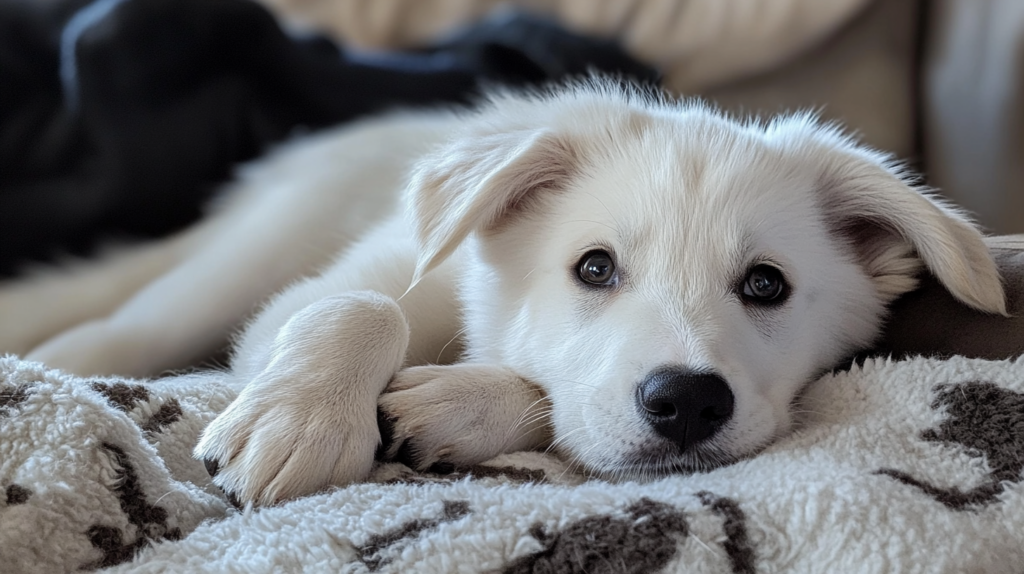
Conclusion: The Enduring Legacy of the Akbash Dog
The legacy of the Akbash Dog is woven deeply into the fabric of Turkish history. This remarkable breed has been:
- A steadfast guardian of livestock for centuries
- A symbol of rural life, embodying the essence of traditional agriculture
- An integral part of community life, providing not only protection but companionship
As we look at future prospects for the breed, challenges loom on the horizon. Changing agricultural practices and modern farming techniques can threaten the Akbash’s role as a livestock guardian. Many farmers may turn to alternative methods or breeds that align more closely with current trends.
To ensure the survival of this noble breed, concerted efforts are essential. Readers can contribute in various ways:
- Participate in conservation programs that focus on preserving the Akbash history
- Advocate for awareness surrounding this breed’s importance to both Turkish culture and agriculture
Together, we can honor the legacy of the Akbash Dog while safeguarding its future for generations to come.

FAQs (Frequently Asked Questions)
What is the historical significance of the Akbash Dog?
The Akbash Dog is a traditional Turkish breed that has played a crucial role in agriculture, particularly as a livestock guardian. Understanding its legacy is important both in Turkey and internationally, as it reflects the breed’s contributions to farming practices and rural life.
What are the origins of the Akbash Dog?
The Akbash Dog originated in the Fertile Crescent region, closely connected to ancient agricultural practices in Turkey and surrounding areas. Its history as a domesticated dog highlights its importance in early human societies for livestock protection.
How has the Akbash breed developed over time?
The development of the Akbash Dog involved the evolution of its physical and behavioral traits specifically for livestock guarding. It shares similarities with other traditional livestock guardian breeds such as the Anatolian Shepherd and Kangal Dog, and has gained recognition from organizations like UKC and ADAA.
What role does the Akbash play as a livestock guardian?
Historically, Akbash Dogs have been used to protect sheep from predators like wolves and bears. Their training methods focus on effective guarding behaviors, and there are numerous case studies showcasing their exceptional guarding abilities.
What cultural significance does the Akbash Dog hold in Turkey?
In Turkish rural communities, the Akbash Dog is not only a practical livestock guardian but also a cultural symbol associated with local folklore and traditions. Its relevance continues in contemporary agricultural practices, reflecting its deep-rooted connection to Turkish heritage.
How is the Akbash breed recognized and advocated for today?
The recognition of the Akbash breed involves kennel clubs such as UKC and WADA, alongside organizations like ADAA and ADAI that promote breed standards. The USDA plays a significant role in ensuring health standards and maintaining pedigree records for this valuable breed.

